
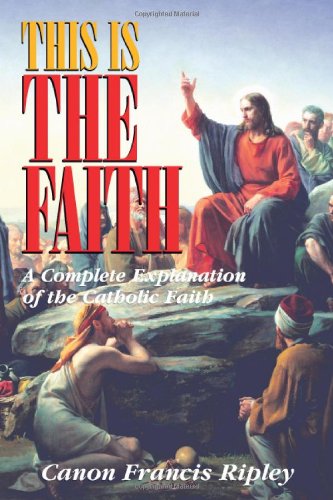
‘They sure don’t make ‘em like this anymore!’
Such may be the exclamation of many a traditional Catholic on discovering this storehouse of treasure.
The treasure in question here is a catechism of the Faith written by the English priest – later Canon – Francis Ripley in 1951.
In its time, it was very popular, read by hundreds of thousands, and reprinted on numerous occasions as a particularly effective summary of the Faith.
Today, by contrast, it is only likely to be a read by a handful of Catholic Traditionalists.
For here among many other things is not simply a storehouse, but a snapshot of Catholicism, such as it was just before the Second Vatican Council (1962-1965).
This is the Faith allows us then to glimpse the powerful and robust faith, which still oriented untold souls to God and that still served to direct their eyes from the world.
Instead today we are often left with forms of Catholicism, that are nigh-indistinguishable from the world …
For me, the book has been an absolute joy. It is first of all, immensely readable. I admit to having spent years working through the modern Catechism of the Catholic Church. Indeed I confess, I have never quite managed to finish it. By contrast I devoured Canon Ripley’s book in a matter of days.
The book is also very clear. Do you wish, dear Reader, to find a clear-to-the-point explanation of why the traditional Catholic Faith holds that the Holy Mass is a Sacrifice? Would you like a clear explanation of the accidents and the substance involved in the Trans-substantiation?
If so, you will find herein, helpful explanation in no uncertain terms.
And if you are like me, you may also frequently breathe a sigh of relief reading the Mysteries of the Faith rendered in such unambiguous language. Myself – I started my journey into the Faith thirteen years ago with Richard McBrien’s Catholicism. What a contrast!
So much modern writing about the Faith is written in a style that can seem deliberately obscurantist – as though the writer were embarrassed or hardly knows how to come out and plainly say it: we are dealing with the sublime spiritual mysteries here.
There is nothing like this with Canon Ripley! And if you are like me, dear Lector, you may also feel you are in the company of a warm and noble man of the Faith …
Does all this approbation mean that I am without reservations of any kind about this book?
To this question, I would respond by drawing attention to what the nature of book such as this really is.
When one thinks of it, that nature is daunting indeed.
For Canon Ripley has done nothing less than to single-handedly undertake a treatise attempting to sum up the greatest Mysteries God has revealed to humanity!
When it comes to such an endeavour, I think it wise to have some reservations concerning the work of any fallible human author – even one as lovely as this.
The spirit of this book is very, very ROMAN Catholic. And it is Roman in a way that brings joy to my own Roman Catholic Heart. This is to say, that it is very much in the spirit of the Latin West of the Church, reflecting a logical, precise and legal Thomism. All of this is in a fashion that I personally find edifying and moving.
Yet I am aware of a certain kind of Catholic, who might not find it quite so edifying.
Am I thinking of the type of so-called “Spirit of Vatican II Catholic” who thinks the main problem with the Church today is that Vatican II did not do enough to shred the tradition and pave the way for gay, lesbian and trans-sexual bishops?
No. It goes without saying that such a soul will want to hurl Canon Ripley’s warm repository of the Tradition into the nearest hearth he can find …
Rather, I am thinking of a different kind of Catholic, one who venerates the tradition in many ways, but is not so scholastic in his orientation.
A beloved Catholic friend comes to mind here. He loves the early Greek fathers of the Church. He is not naturally so drawn to St. Thomas Aquinas. I imagine him reading Canon Ripley’s text and complaining: it is all too scholastic, too legal, too logical. The Mysteries of God cannot be reduced into such tidy fixed compartments, he might say.
And he might well say worse.
But there is a curious thing here. While I would understand my friend’s concerns, it is a striking thing that to my mind, this book is never dry. Nowadays, many caricature this approach as sterile and arid.
This book proves the reverse. I must confess I find the supposedly liberal, tolerant open-minded and academic Richard McBrien much drier – often boring in fact. And certainly less inspiring!
Still a map is not the territory.
A catechism is not the Mystery of the Triune God and all the supernatural mysteries of the angels, the Sacraments and the Holy Church.
A map reduces three dimensions to two in order to guide people. A catechism must attempt something analogous – though far more daunting. It is not the Mystery itself, but must provide a container for it.
Here is a container drawing amply on the Latin West and on the precision and logic of St Thomas Aquinas and the Scholastics. Here is a treatise where you will find fine distinctions drawn between mortal and venial sin, accidents and substance, contrition and attrition.
And it is all conveyed by an author whom I find it impossible to conceive as other than a warm, human and indeed holy soul. The book is never arid. It breathes life and piety and beauty.

Is it perfect? Would the opinion of my Catholic friend in love with the Greek fathers of the East be simply wrong?
No I will not say he would be simply wrong. But I would say to him that he is possibly missing something warming, enobling and beautiful in the Latin West that shines throughout the book.
ROMAN Catholics in love with their Tradition need have no worry in seeking this out. I recommend it to them most heartily. I feel they will be enriched indeed …
There are other Catholics who will relate to it less easily. I understand and I do agree with them that the map is not the territory …
Once again, this is a snapshot of the Catholicism that dominated just before the Council. It is a container for a Catholicism that is beautifully and unashamedly supernatural.
It is the kind of pre-Vatican II container for a Catholicism that worked for countless souls in that era. This was a Church that was decisively counter-cultural. This book will warn you candidly that it is a sin to read “bad books”. It may be a venial sin, but as the author explains these if “unheeded may lead to sickness …”
Now, just conceivably, there are some modernists who might even agree that this kind of Catholicism was appropriate in the 1950’s. But now, we need to be up-to-date. As though the zeitgeist were the ultimate authority …
I simply wish that such modernists could SHOW ME a so-called modern catechesis THAT WORKS.
That is to say, a modern catechesis, where people still realised why it is fitting to be on their knees as they approach the Mystery that has been enacted on the altar.
That is to say, a catechesis where people realise their need for the Supernatural Assistance of the Sacraments.
That is to say, a catechesis where evil, hell and the powers of darkness are treated with the seriousness that is due to them, as grave dangers not only to our own individual souls, but to the Soul of the World.
But modern Catholics realise these things less and less. Fewer and fewer can see the Real Presence. Fewer and fewer see the crying need for the Sacraments. Penance in particular is almost dead and as Canon Ripley would surely observe if he were alive today, people are deprived and starved of Sanctifying Grace as a result.
Modern catechesis doesn’t work.
Canon Ripley’s form of catechesis did work. It worked before the Church imploded and ceased to celebrate her Mysteries as Mysteries. It worked in an epoch when the Catholic Church was far more self-evidently a site of Holy Mystery and not a community sing-a-long …

And Canon Ripley’s tome still works for those who can see beyond the fog generated by community sing-a-longs. Here is a distinctly Roman Catholic priest that easily persuades that he is very much in touch with the depths of the Catholic Mystery.
But forgive me if I wrong you, Fathers of the so-called “Spirit of Vatican II”. Often, you fail to convince me of any such thing at all.
Sometimes you seem to me as though you might be in touch with a kind of pre-Christian mystery of God transcendent. But the Mystery of Jesus Christ incarnate in His Church? I confess that often indeed, I am less than convinced …
Until and unless modernists can show us a Catholicism that readily imparts a living faith in the supernatural Mysteries of Christ in His Church, I think there is a lot to be learned from the noble spirit of Canon Francis Ripley …
Still, I concur with the view of the Holy Father: The tradition cannot be frozen in 1962. Some of what has happened since then – some, even if only comparatively little – is important. We cannot simply go back to 1951. Much as the rich faith of Canon Ripley might inspire such a wish in us.
However what we can do with this book is not only study the timeless Mysteries of the Faith.
We can also ponder what this pre-Vatican II snapshot can tell us about catechesis today.
We can meditate on the very great differences in the way the Mysteries are presented – then and now. When we read Ripley’s discussions of certain specific causes of mortal sin, we may understand why the Holy Father clearly believes that some kind of reform was necessary.
Foreword for Monarchy by Roger Buck
This book then can serve as profound source for reflection. At least, this is what it has done for me. It has helped me to meditate not only on the timeless Mysteries of the Church – but also on the aspects of the Church that are conditioned in time.
Occasionally it has helped me see more clearly why the conservative Joseph Ratzinger as both Cardinal and Pope has indicated that some kind of reform was necessary. Occasionally it has alerted me to aspects, which it would seem the Holy Father believes are too frozen in time.
Occasionally, I want to stress. For far more often – far, far more often it has stimulated my awareness of what did not need to change.
Yes I would like to encourage traditional Catholics who care about the future of the Church to let this book be a source of meditation for them.
With the aid of this precious catechism, I pray that people can meditate more deeply on the timeless Mysteries of the Church. With this precious catechism, I pray they can also meditate more clearly on the changes in time and on the enormous gulf that exists between the pre-Vatican II Church and the so-called “Spirit of Vatican II”.
Make no mistake dear Reader. This book is among the most important I have yet reviewed at this site. It has made a very deep impact on me.
And much of the reason for its value is that it has sharpened my awareness even more as to how very much we have lost in the modern Church. If occasionally, it has helped clarify for me why the Holy Father believes reform was necessary, far more often it has helped me see what needs to be reclaimed.
If you are a Catholic of Faith and Tradition, consider meditating on this book. Meditate on what we need to reclaim if the Church is not to continue sinking into the abyss.
Addenda:
Above is the heart of what I want to say. There are however two postscripts I wish to add. The second and more important postscript is admittedly quite lengthy.
Postscript 1: There is one feature of the book that I must draw attention to. It has nothing to do with Canon Ripley himself.
Rather, an American called Thomas A. Nelson has modified the book significantly for the twenty-first century.
To his great credit, Nelson is forthright about what he has done. I do not doubt his sincere desire to give readers a better book. Yet I do not quite understand his thinking. He justifies his endeavour in part by suggesting that the 1951 edition was not sufficiently or professionally copyedited. Yet by his own account, the book was reprinted numerous times on both sides of the Atlantic for twenty years. Presumably Father Ripley was content with it during that period.
However in 1973, Father Ripley brought forth a new edition. However, by his own admission, Johnson ignores the 1973 version and goes back to the 1951 text. He explains that he has made numerous additions, which he believes make for a greater “degree of persuasiveness”. Nelson may well have added rich treasures to the text in this quest for more “persuasiveness”. Perhaps I would be grateful indeed for these, if I recognised them.
But clearly there are two hands at work in the text and the second hand appears to have ignored the first author’s later intentions.
Foreword for Monarchy by Roger Buck
Postscript 2: It is customary in reviews to quote material from a book. Though I have hardly done this at all above, I hope I may be forgiven for inserting some gems from the book in this postscript.
What I propose is a little medley of sorts.
I am stringing together various sentences and snippets of the book together.
This is not especially ordered – but it may suggest a flavour of Father Ripley’s approach. Particularly if you are familiar with modern catechesis, you may see the source of my delight …
In his second epistle, the Prince of the Apostles tells us of this astounding truth: “That by these you may be partakers of the Divine Nature …
Those who are united with Christ through grace share in the supernatural life of Christ. By this sharing we receive powers that far exceed those that are natural to us …
We see how closely we are related to Christ in the Mystical Body – more closely than we are related to our natural mothers, fathers, sisters or brothers. We are not merely members of the same family or society but members of the same body …
We have already seen how completely Christ transferred His own power to St Peter and to a lesser extent to the apostles.
He completely identified the Church with Himself. He was indeed the Bridegroom. She the bride, but they were to be “two in one flesh” (Cf. Matt. 19:5-6). Every important section of His life, every significant interest of His heart, He transferred to His Church.
The early Christians were so full of that notion that they would call their bishops and priests “other Christs” for they were the living and walking continuance of the mission of Christ to the world.
As He spoke, they spoke; what He did, they did; whom He loved, they loved; as He prayed, they prayed; as he offered sacrifice, he offered sacrifice; as He forgave sins, they also forgave …
The purpose of Holy Communion is to incorporate us more completely into the Mystical Body of Christ …
Let us remember that the Mass is the greatest action we have on this earth. It is not only a prayer, but an action and the self-same action that Christ performed on Calvary, re-enacted by him once more each time Mass is offered …

Buying Books at Amazon Through These Links Gives Us a Commission. This Supports Our Apostolate. Thank You if You Can Help Us Like This!
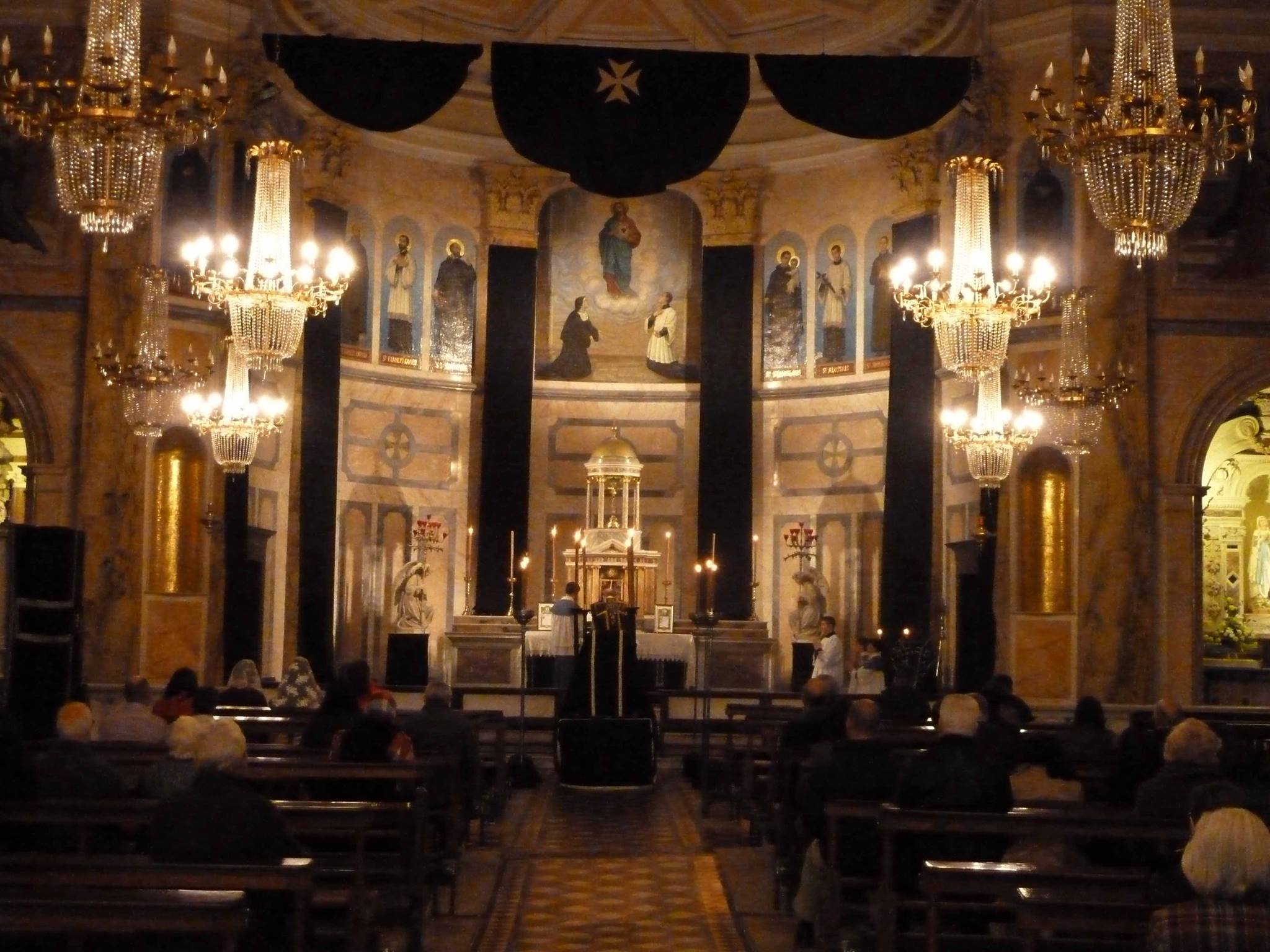
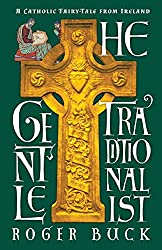
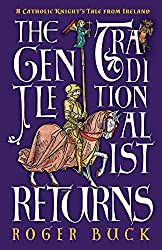

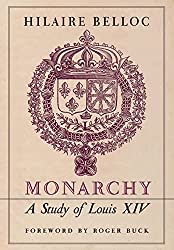

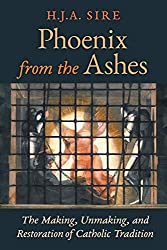


Comments
comments are currently closed
20 responses to “This is the Faith by Canon Francis Ripley (Review)”
Very good review, and I second the recommendation. The book is written in a very readable question/answer style, much like the Baltimore Catechism, and topics are organized logically. While you could read it from cover to cover, it’s also a great reference for when you want to look something up, like when a friend says “Why do Catholics do X?” It’s far more accessible to the non-theologian than the new CCC (though whether the CCC was intended to be accessible is, perhaps, a question for another time).
As for being out-of-date, or representing 1950s Catholicism, I don’t see that as a problem, because the faith hasn’t changed. Maybe some of the rules have been eased, like the fasting requirements before Mass, but there’s nothing wrong with following the earlier, stricter rules. While I don’t think we should try to go back to 1951 (for one thing, something about 1951 led to 1961 and so on, so there were problems then, even if they were under the surface), I do think we should try to pursue the kind of certainty about our faith that existed then, that this book conveys. No beating around the bush, trying to dress everything up in enough nuance and big words to make it palatable. Just: “Here’s what the Church teaches and requires.” That should be possible in any era.
Thank you, Aaron. Very nice to have your voice here again.
I laughed out loud at this:
“whether the CCC was intended to be accessible is, perhaps, a question for another time.”
But I am not sure whether it would be better that I were weeping than laughing.
Also most lamentable is the pronounced modern tendency you ably sum up here;
… “beating around the bush, trying to dress everything up in enough nuance and big words to make it palatable.”
There is a need for nuance in certain matters, I think. But so frequently it is being used and twisted for evasion, equivocation, disobedience, dilution, compromise and worse …
Dare I say treachery and betrayal?
Yes I dare …
[…] I recently suggested in a long review (here) of Canon Ripley’s This is the Faith, there is now so much downright embarrassment to speak of the Catholic Mystery in straightforward, […]
The Baltimore Catechism is not from 1951; it is based on the catechism of Pope Pius X, which can be found on-line. It makes interesting reading to see what has changed in the meantime, what is eternal and what is time-bound. For example, do we really still need to burn protestant bibles?
The project of the Nouvelle Theologie, which is the basis of Vat II and the subsequent popes, is to keep the formulas of the faith, while adapting their internal meaning. It’s risky, because it opens the door to “evasion, equivocation, disobedience, dilution, compromise and worse”; the question I am incompetent to answer is whether those consequences are necessary or accidental.
On the other hand, Roger, I know we are both familiar with spiritual literature that seems to do the same thing. However, I believe that, properly done, it leads to a deepening of the truths of faith, not its betrayal. It’s a hard question.
Thank you, Cologero!
I will just point out that I was not making any reference to the Baltimore catechism. Of which I know little. I was actually under the (false?) impression though that the origins of that regional catechism pre-dated the twentieth century St Pius X. But I must check …
No 1951 is a reference to the Catechism by Ripley.
However I think you are indicating very important things.
What I was trying to say in my review of Ripley is that there is need for nuance, for realisation that no matter how wonderful a Cathechism might be, it is still a map, not the territory.
Paradox: In rendering three dimensions in two, maps actually distort the truth in order to point to the truth …
So awareness of these things is needed.
Also Ripley says nothing as crude as burning Protestant bibles. But your point about change is well-taken all the same …
In my review of Ripley I was also trying to say that reading Ripley did alert me of why some reform was necessary and that this clearly continues to be a guiding principle of the Holy Father.
Yet as you say clearly a very “hard question” opens up here.
The minute we say nuance is needed, change is needed in certain temporal expressions, it is the proverbial thin edge of a wedge for relativism and complete irreverence.
What I was trying to do with Ripley (how well I succeeded is another matter!) is indicate awareness of the very important issues you raise here, while still revering the tradition and saluting Ripley’s efforts.
Hopefully if one’s heart is truly venerating the Saints and geniuses of the Tradition, one can be spared all the relativistic equivocation that I imagine you, Aaron and I are seeing … seeing painfully.
[…] I said last time, these are first the Ripley review and then the book review of Bougaud. Then, this the last extensive blog entry and finally a long […]
[…] here: Heart of the Redeemer, Meditations on the Tarot, Puritan’s Empire, Life of St M.M., This is the Faith, Marian Apparitions, The Secret of the Rosary, France and the Cult of the Sacred Heart This entry […]
[…] UsKim's WeblogRoger's WeblogWebburstsReviewsArticlesUK StoreUS Store « Book Review: This is the Faith by Canon Francis Ripley On the Nature of this Website: Pulling the Pieces Together […]
[…] Meditations on the Tarot Book Review: Marian Apparitions Book Review: The Heart of the Redeemer Book Review: This is the Faith This entry was posted in Reviews and tagged Catholic America, Dictatorship of Secularism. Bookmark […]
[…] (Meditations on the Tarot), (Puritan’s Empire), (Life of St Margaret Mary Alacoque), (This is the Faith), (Marian Apparitions), (The Secret of the Rosary), (France and the Cult of the Sacred Heart). /* […]
[…] (Meditations on the Tarot), (Puritan’s Empire), (Life of St Margaret Mary Alacoque), (This is the Faith), (Marian Apparitions), (The Secret of the Rosary), (France and the Cult of the Sacred Heart) (The […]
[…] (Meditations on the Tarot), (Puritan’s Empire), (Life of St Margaret Mary Alacoque), (This is the Faith), (Marian Apparitions), (The Secret of the Rosary), (France and the Cult of the Sacred Heart) (The […]
[…] (Meditations on the Tarot), (Puritan’s Empire), (Life of St Margaret Mary Alacoque), (This is the Faith), (Marian Apparitions), (The Secret of the Rosary), (France and the Cult of the Sacred Heart) (The […]
[…] (Meditations on the Tarot), (Puritan’s Empire), (Life of St Margaret Mary Alacoque), (This is the Faith), (Marian Apparitions), (The Secret of the Rosary), (France and the Cult of the Sacred Heart) (The […]
[…] (Heart of the Redeemer), (Meditations on the Tarot,) (Puritan’s Empire), (Life of St M.M.), (This is the Faith), Marian Apparitions, The Secret of the Rosary, France and the Cult of the Sacred […]
[…] here: Heart of the Redeemer, Meditations on the Tarot, Puritan’s Empire, Life of St M.M., This is the Faith, Marian Apparitions, The Secret of the Rosary, France and the Cult of the Sacred […]
[…] What amasses in us, as we participate in Mass after Mass after Mass? For as Canon Ripley has written in his pre-Vatican II catechism This is the Faith: […]
Bravo!
Thank You for such a great description and referral of this book! You had a link to amazon, where I could order it for 1 penny! I look forward to reading it with Dr Janet Smiths study of why the Catholic church is right on contraception! 🙂 Thank you for your beautiful articles I find on Pinterest.
God Bless You and may our good God keep you strong in the one true faith!
Thank you so much Marie. This is the Faith is a treasure and to find it for a penny!
[…] here: Heart of the Redeemer, Meditations on the Tarot, Puritan’s Empire, Life of St M.M., This is the Faith, Marian Apparitions, The Secret of the […]
Does this Nelson update, depart from a traditional catholic teaching? Email: [email protected]